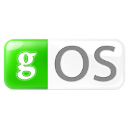Google Chrome OS; Conclusion
No discussion of cloud operating systems is complete without a mention of Google’s Chrome OS. While it is certainly not the first cloud operating system created, it is what has brought the concept to the attention of many.
There is a major twist to the story of Google Chrome OS though, as was revealed in a conversation between Ars and Google. In this discussion what Google said clarified the position of Chrome OS as an OS for specialized internet surfing devices, not personal computers.
Imagine this, a company unveils a new operating system for the sole purpose of playing games. An operating system is optimized for the heavy multimedia requirements of such a task. What if then, later on they also reveal that the OS will only be available on special devices which are optimized for same purpose?
Since Google has released the source code of the OS though, it is likely to find its way on all kinds of computers. Today you can get Chrome OS on a pendrive if you want to experiment with it, and you are likely to find many more uses come up as time goes on.
As an OS for a cloud device, Chrome OS gets straight to the point. You boot into the browser, and you start working. A review of Chrome OS is likely to sound much more like a review of the Chrome browser. Now we know though that the OS will feature some kind of application to handle multimedia, although it is easy to guess that such an application would, once again, run in the browser itself and be an HTML5 based interface. Such an web app, if included in Chrome OS would be able to play most popular kinds of audio (mp3, mp4, vorbis), and video (theora, h.264, mp4, etc) making it a decent multimedia application.
Other than the browser itself, Chrome OS has very few features. The window management system on Chrome OS does deserve a mention though. The window manager allows you to switch between windows using the familiar ALT TAB and also includes an overview of all open windows accessible by pressing F12. In this view you can peek into the tabs open in each window, and switch to it if desired.
| Introduction
An introduction to the expectations from a cloud OS.
|
|
 |
xPUD
A light, fast, modular Firefox based linux distro, which has you online in seconds.
|
 |
Jolicloud
A powerful linux distro optimized for netbooks, with a sleek easy to use interface.
|
 |
gOS 3.1 Widgets
Heavily wigetized Linux distribution with a large collection of internet application built in.
|
 |
Moblin
An easy to use Linux which is optimized for mobile computers, and is hightly integrated with internet services.
|

